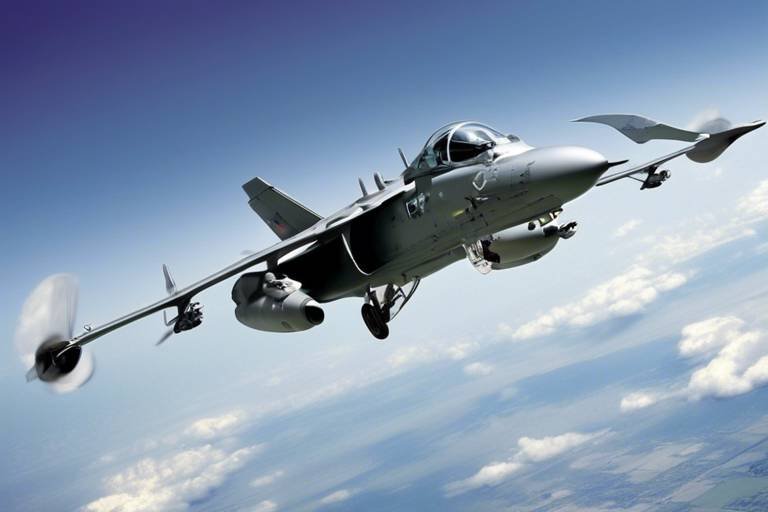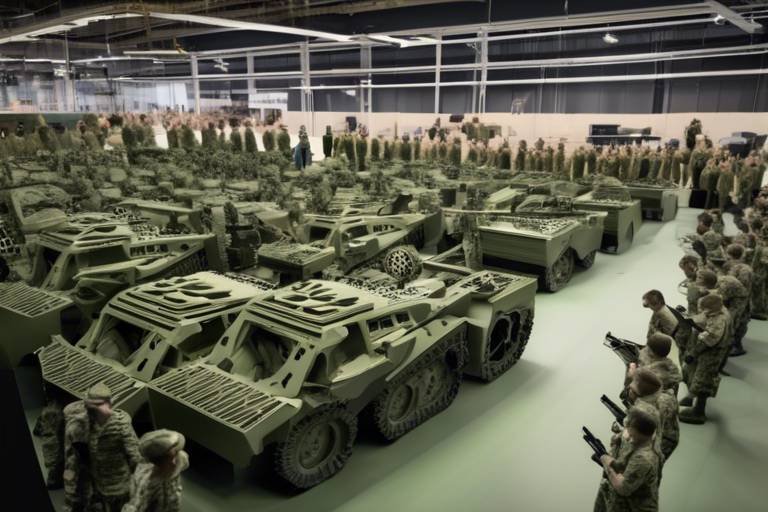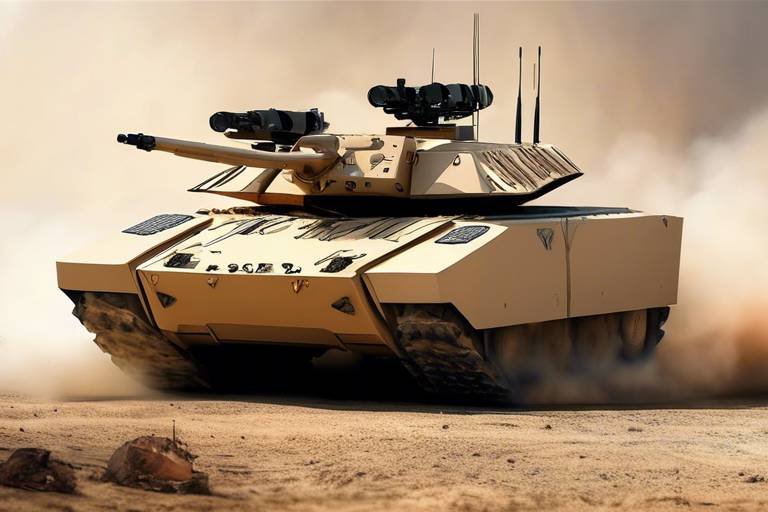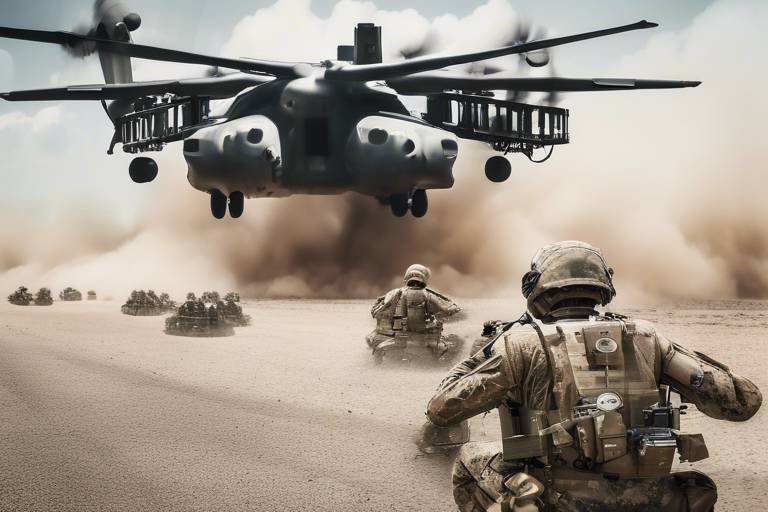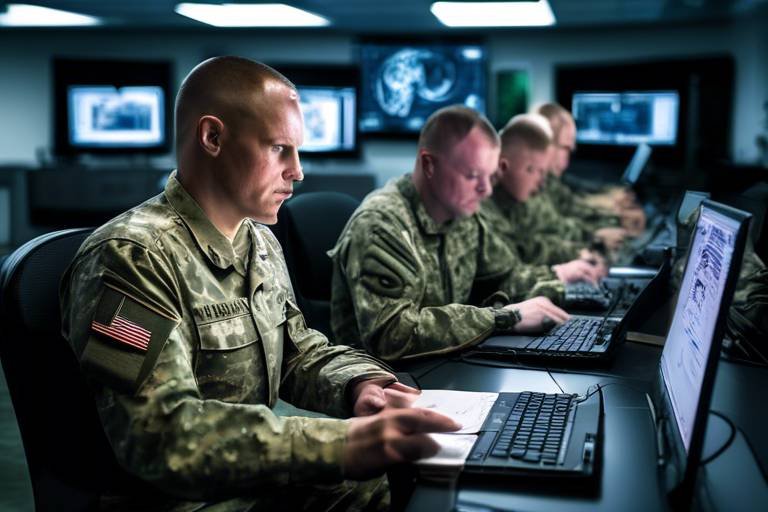Military Robots - Building a Future Army of Machines
The concept of military robots has evolved dramatically over the years, transitioning from rudimentary remote-controlled devices to advanced autonomous systems equipped with cutting-edge technology. This evolution is not merely a technological upgrade; it represents a fundamental shift in how warfare is conducted. Imagine a battlefield where machines handle the most dangerous tasks, allowing human soldiers to focus on strategy and decision-making. This shift not only enhances operational capabilities but also aims to significantly reduce the risks faced by personnel in combat zones.
As we delve deeper into the realm of military robotics, it becomes clear that these machines are not just tools; they are integral components of modern warfare. The integration of robotics in military operations is reshaping defense strategies across the globe. From surveillance to logistics and even combat support, military robots are designed to perform a variety of tasks, each tailored to meet specific operational needs. This article explores the multifaceted world of military robots, examining their evolution, types, benefits, and the ethical considerations that accompany their use.
In today's fast-paced technological landscape, the military's adoption of robotics is a natural progression. With the increasing complexity of warfare, traditional methods are often inadequate. Military robots provide innovative solutions, allowing forces to respond to threats with unprecedented speed and precision. As we look towards the future, the potential for military robots seems limitless, promising a new era of warfare where machines and humans work in harmony to achieve strategic objectives.
- What are military robots used for? Military robots are employed for various purposes, including reconnaissance, bomb disposal, logistics, and combat support.
- How do military robots enhance safety? By taking on dangerous missions, military robots help to minimize human casualties and allow soldiers to focus on strategic tasks.
- What are the ethical concerns surrounding military robots? Key concerns include accountability for autonomous decisions, potential misuse, and the need for regulation and oversight.
- What is the future of military robotics? The future holds the promise of enhanced AI integration and improved collaboration between humans and robots on the battlefield.

Evolution of Military Robotics
The journey of military robotics has been nothing short of extraordinary, evolving from rudimentary remote-controlled devices into highly sophisticated autonomous systems. This transformation has significantly enhanced operational capabilities while simultaneously reducing the risks faced by human soldiers on the battlefield. In the early days, military robots were primarily used for simple tasks such as bomb disposal or surveillance, often requiring a human operator to control them from a distance. However, as technology advanced, so did the complexity and functionality of these machines.
Take a moment to imagine a battlefield where human soldiers are exposed to the harshest conditions and dangers. Now picture a fleet of robots, equipped with cutting-edge technology, taking on the most perilous tasks. This is not just a futuristic dream; it is the reality we are moving towards. The evolution of military robotics can be broken down into several key phases:
- Initial Development (1940s-1980s): The first military robots were basic remote-controlled vehicles used primarily for reconnaissance and bomb disposal. These machines laid the groundwork for future advancements.
- Technological Advancements (1990s-2000s): The introduction of GPS technology and improved sensors allowed for more precise operations, leading to the development of drones and unmanned ground vehicles (UGVs).
- Autonomous Systems (2010s-Present): The current era is characterized by the rise of autonomous robots capable of making decisions without human intervention, thanks to advancements in artificial intelligence and machine learning.
This evolutionary path illustrates how military robotics has adapted to meet the demands of modern warfare. Today, these machines are not just tools; they are integral components of military strategy. The incorporation of advanced sensors, AI, and communication systems has enabled military robots to perform a variety of roles, including surveillance, logistics, and combat support.
Moreover, the integration of robotics into military operations has sparked a new wave of innovation, pushing the boundaries of what is possible. For instance, modern drones can now carry out complex missions, from delivering supplies to pinpointing enemy positions, all while minimizing the risk to human lives. This shift towards automation not only enhances operational efficiency but also represents a significant leap in how wars may be fought in the future.
As we look ahead, the evolution of military robotics shows no signs of slowing down. With ongoing research and development, the future promises even more advanced capabilities, leading us to ponder: what will the battlefield of tomorrow look like? Will we see a complete reliance on machines, or will there always be a place for human intuition and strategy? These questions are crucial as we navigate the implications of military robotics in warfare.
- What are military robots used for? Military robots are utilized for various purposes, including surveillance, reconnaissance, bomb disposal, and combat support.
- How have military robots evolved over the years? They have evolved from simple remote-controlled devices to sophisticated autonomous systems equipped with advanced AI and sensors.
- What are the benefits of using military robots? Benefits include enhanced safety for personnel, increased operational efficiency, and the ability to operate in hazardous environments without risking human lives.
- What ethical concerns are associated with military robots? Ethical concerns include issues of autonomy, accountability for actions taken by robots, and the potential for misuse in warfare.
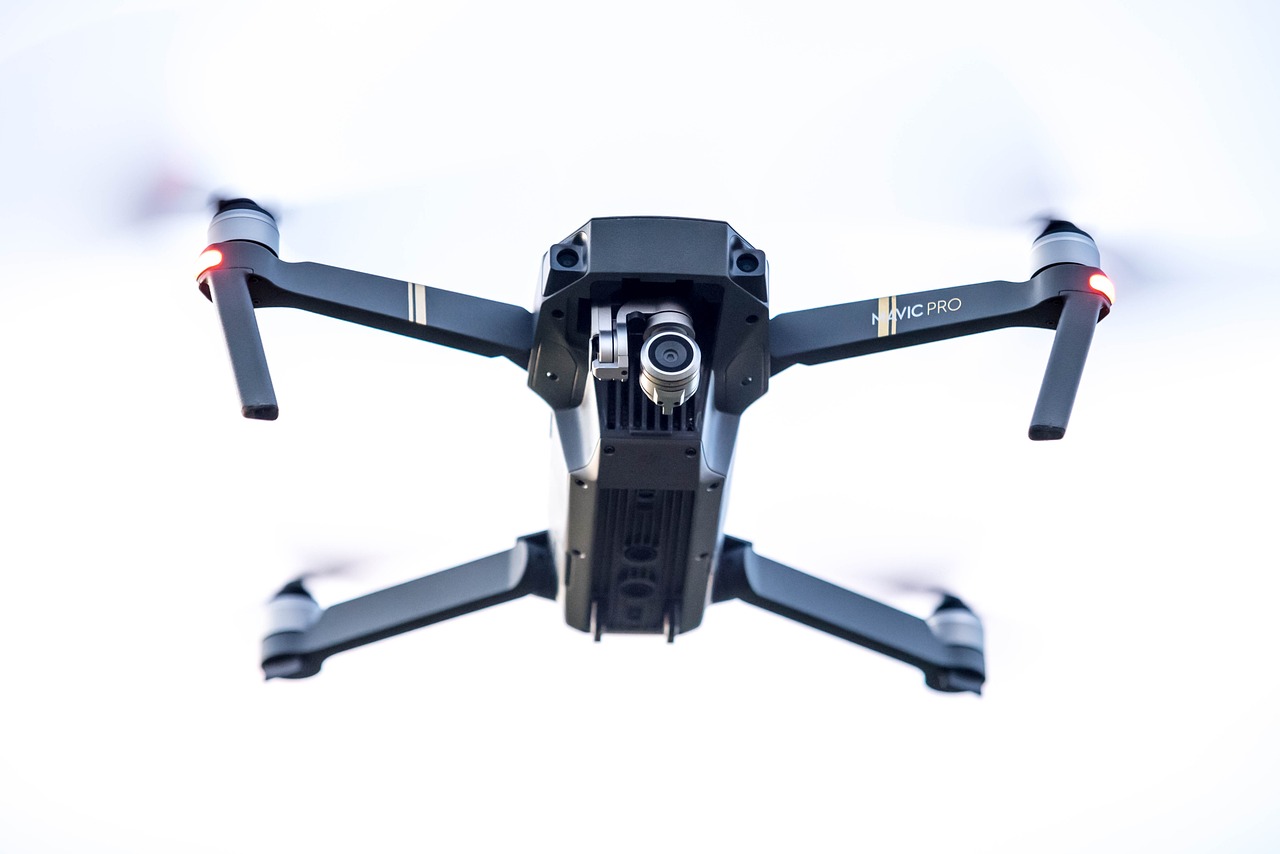
Types of Military Robots
The landscape of modern warfare has been dramatically reshaped by the introduction of various types of military robots. These machines, designed for specific tasks, enhance the capabilities of armed forces while ensuring the safety of personnel. From the skies to the ground and even beneath the waves, military robots serve critical roles in today’s defense strategies. Let’s dive into the different categories of military robots and explore how each one contributes to military operations.
One of the most recognized types of military robots is the Unmanned Aerial Vehicle (UAV), commonly referred to as drones. These flying machines have revolutionized aerial reconnaissance and strike capabilities. Drones come equipped with advanced sensors and cameras, allowing them to gather intelligence from great heights without putting a pilot in harm's way. UAVs can be categorized into two main types: Combat Drones and Surveillance Drones.
Combat Drones are armed with sophisticated weaponry, enabling them to engage enemy targets with pinpoint accuracy. Their ability to operate at high altitudes while delivering precision strikes not only reduces collateral damage but also increases mission effectiveness. For example, during military operations, combat drones can be deployed to neutralize threats while minimizing the risk to ground troops.
On the other hand, Surveillance Drones play a crucial role in intelligence gathering. These drones are equipped with high-resolution cameras and sensors that provide real-time data, enhancing situational awareness for military operations. By transmitting live feeds back to command centers, surveillance drones allow military strategists to make informed decisions based on up-to-date information.
Moving from the skies to the ground, we encounter Ground Robots, including Unmanned Ground Vehicles (UGVs). These versatile machines are designed for various tasks, such as reconnaissance missions, bomb disposal, and logistical support. Ground robots have proven to be invaluable in improving operational efficiency on the battlefield. For instance, UGVs can be deployed to transport supplies to troops in remote locations, reducing the need for human escorts in dangerous areas.
Additionally, there are specialized robots designed for underwater operations. These robots, often referred to as Unmanned Underwater Vehicles (UUVs), are utilized for tasks such as mine detection, surveillance, and reconnaissance in naval warfare. UUVs can operate stealthily beneath the surface, gathering intelligence without alerting the enemy.
In summary, the types of military robots encompass a wide range of applications, each tailored to meet specific operational needs. From UAVs that dominate the skies to UGVs that traverse the ground and UUVs that explore underwater realms, these machines enhance the capabilities of modern military forces. Their deployment not only streamlines operations but also significantly reduces the risk to human life. As technology continues to evolve, we can only anticipate further advancements in military robotics that will redefine the future of warfare.
- What are military robots used for? Military robots are used for various purposes, including surveillance, reconnaissance, logistics, and combat support, enhancing operational efficiency and safety.
- How do drones improve military operations? Drones provide real-time intelligence and can engage targets with precision, minimizing risk to personnel and increasing mission effectiveness.
- What are the benefits of using ground robots? Ground robots can perform dangerous tasks such as bomb disposal and supply transport, significantly reducing the risk to human soldiers.
- Are there ethical concerns regarding military robots? Yes, the use of military robots raises questions about autonomy, accountability, and the potential for misuse in warfare.

Unmanned Aerial Vehicles (UAVs)
Unmanned Aerial Vehicles, commonly referred to as UAVs or drones, have dramatically changed the landscape of modern warfare. These advanced machines have evolved from simple remote-controlled devices into highly sophisticated platforms capable of performing a wide array of military tasks. Imagine a bird soaring through the sky, equipped with cameras and sensors, gathering intelligence without ever putting a pilot in harm's way. This is the essence of UAVs—providing a strategic advantage while keeping human lives safe.
One of the most significant advantages of UAVs is their ability to conduct surveillance and reconnaissance missions. Traditional aerial reconnaissance often involved risking the lives of pilots in hostile environments. With UAVs, military forces can gather critical real-time intelligence from a safe distance. These vehicles can be deployed for various missions, including:
- Battlefield Surveillance: Monitoring enemy movements and troop concentrations.
- Target Acquisition: Identifying and tracking potential targets for strikes.
- Damage Assessment: Evaluating the impact of military operations post-engagement.
UAVs are equipped with cutting-edge technology that enables them to deliver high-resolution imagery and real-time data. This capability significantly enhances situational awareness, allowing military commanders to make informed decisions swiftly. For instance, the integration of thermal imaging and night vision technology in UAVs allows them to operate effectively under various conditions, providing a tactical edge during nighttime operations or adverse weather.
Moreover, UAVs have proven invaluable in combat scenarios. Combat drones, a subset of UAVs, are armed with advanced weaponry, enabling them to engage enemy targets with remarkable precision. This capability not only reduces collateral damage but also increases mission effectiveness. The ability to strike from the sky minimizes the risk to ground troops and allows for rapid responses to emerging threats.
However, the rise of UAVs also brings about a set of challenges and ethical considerations. The potential for misuse, such as unauthorized strikes or surveillance violations, raises questions about accountability and regulation in the use of these machines. As military forces continue to integrate UAVs into their operations, the need for clear guidelines and oversight becomes increasingly critical.
In summary, UAVs represent a significant leap forward in military technology. They enhance operational capabilities, reduce risks to human life, and provide unprecedented levels of intelligence and precision in combat. As we look to the future, the role of UAVs in military strategy will undoubtedly expand, shaping the way conflicts are fought and won.
- What are UAVs used for in the military? UAVs are primarily used for surveillance, reconnaissance, target acquisition, and combat operations.
- How do UAVs enhance safety for military personnel? By conducting missions remotely, UAVs reduce the risk to human lives, allowing soldiers to focus on strategic tasks.
- What technologies do UAVs utilize? UAVs use advanced technologies such as high-resolution cameras, thermal imaging, and GPS for navigation and targeting.
- Are there ethical concerns associated with UAVs? Yes, issues such as accountability, regulation, and potential misuse are significant ethical considerations in the deployment of UAVs.
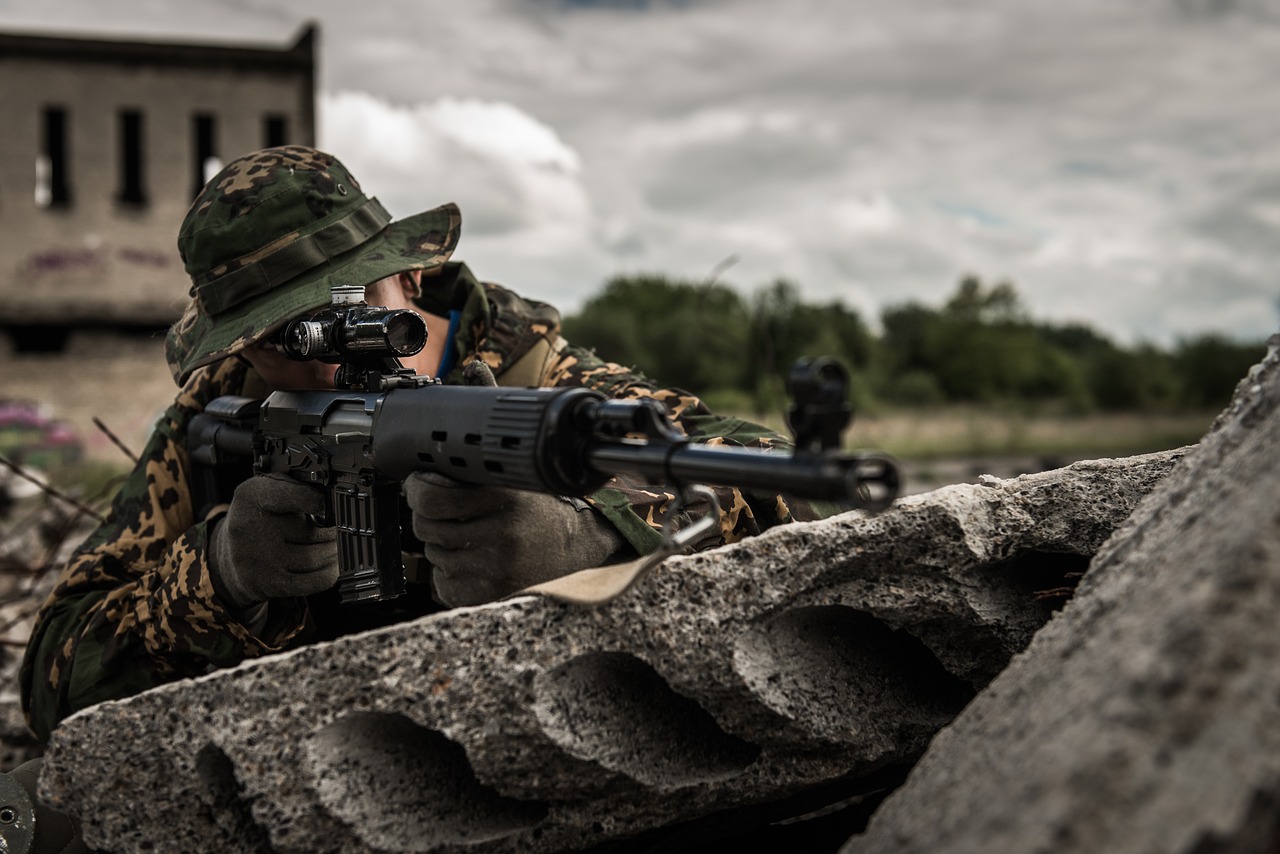
Combat Drones
When we think about the future of warfare, one of the most striking advancements has been the emergence of . These high-tech machines are not just flying robots; they represent a paradigm shift in how military operations are conducted. Equipped with advanced weaponry and state-of-the-art surveillance systems, combat drones are designed to engage enemy targets with pinpoint accuracy, significantly changing the landscape of modern warfare.
Imagine a scenario where a military operation is underway. Soldiers on the ground face numerous threats, and the stakes are incredibly high. This is where combat drones come into play. They can hover above the battlefield, providing real-time intelligence and delivering precise strikes without putting human lives at risk. This capability not only enhances mission effectiveness but also reduces the potential for collateral damage, which is a critical concern in military engagements.
Combat drones operate on a variety of platforms, ranging from small tactical units to larger unmanned aerial vehicles (UAVs) capable of long-range missions. Their versatility is one of their greatest strengths. For instance, smaller drones can be deployed for quick strikes in urban environments, while larger drones can conduct surveillance over vast areas, gathering essential data before any ground troops are sent in. This strategic advantage allows military planners to make informed decisions based on real-time information.
Moreover, combat drones are equipped with cutting-edge technology, including high-resolution cameras, sensors, and advanced targeting systems. These features enable them to identify and track targets with incredible accuracy. The integration of artificial intelligence is also becoming more prevalent, allowing these drones to analyze data and make decisions faster than human operators. This could mean the difference between success and failure in critical missions.
However, the rise of combat drones is not without its challenges. Ethical considerations loom large, particularly regarding the implications of using autonomous systems to make life-and-death decisions. As military forces increasingly rely on these machines, questions arise about accountability and the potential for misuse. Who is responsible if a drone mistakenly targets civilians? These are vital discussions that need to take place as we continue to integrate technology into warfare.
In summary, combat drones are reshaping the battlefield in unprecedented ways. Their ability to conduct operations with minimal risk to human life, combined with their advanced capabilities, makes them an invaluable asset in modern military strategies. As technology continues to evolve, it will be fascinating to see how combat drones further influence the future of warfare.
- What are combat drones used for? Combat drones are primarily used for targeted strikes, surveillance, and reconnaissance in military operations.
- How do combat drones reduce collateral damage? By utilizing precision targeting systems and advanced technology, combat drones can engage specific targets with minimal risk to surrounding areas.
- Are combat drones autonomous? While many combat drones can operate autonomously, they are typically controlled by human operators who make the final decisions regarding engagement.
- What ethical concerns are associated with combat drones? The use of combat drones raises questions about accountability, the potential for misuse, and the moral implications of automated warfare.
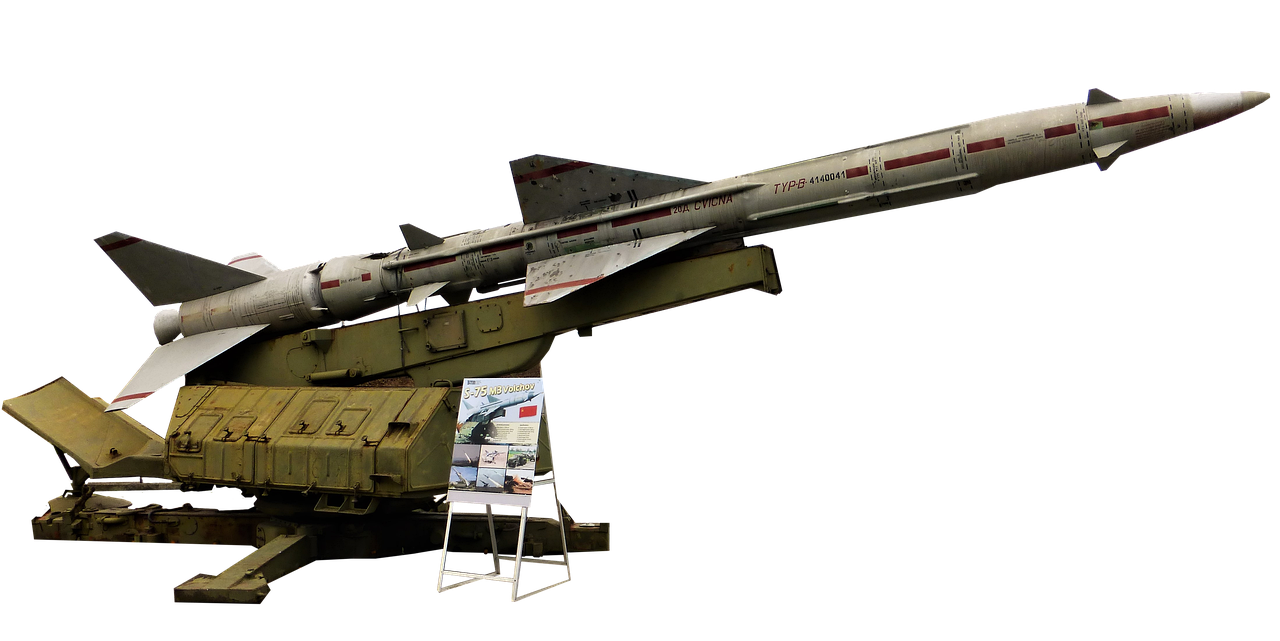
Surveillance Drones
Surveillance drones have become a game-changer in modern military operations, acting as the eyes in the sky that provide crucial intelligence without putting human lives at risk. These unmanned aerial vehicles (UAVs) are equipped with advanced sensors and cameras, enabling them to gather high-resolution imagery and real-time data. Imagine being able to monitor enemy movements, assess battlefield conditions, and gather critical information from a safe distance—this is the reality that surveillance drones offer.
The capabilities of surveillance drones extend far beyond simple reconnaissance. They can operate at various altitudes, allowing them to capture detailed images and videos, whether hovering at low levels or soaring high above the battlefield. Equipped with cutting-edge technology, such as infrared cameras and radar systems, these drones can detect movement and gather data even in challenging weather conditions or during nighttime operations.
One of the most significant advantages of surveillance drones is their ability to provide persistent surveillance. Unlike human operators, who require rest and breaks, drones can fly for extended periods, constantly monitoring a designated area. This capability is particularly valuable during long missions, where maintaining situational awareness is crucial. For example, a single surveillance drone can cover vast areas, providing commanders with updated information that can influence tactical decisions in real time.
Moreover, the data collected by these drones is not just for immediate use; it can also be analyzed and stored for future reference. This information can be invaluable for understanding enemy tactics, planning operations, and training personnel. As military strategies evolve, the integration of surveillance drones into defense operations is becoming increasingly common.
However, as with any advanced technology, the use of surveillance drones raises important ethical and legal questions. The potential for privacy violations and the implications of conducting surveillance without consent must be carefully considered. Military organizations are tasked with balancing the advantages of using drones for national security with the need to respect individual rights and adhere to international laws.
In conclusion, surveillance drones represent a significant leap forward in military capabilities. They not only enhance operational effectiveness but also pave the way for more informed decision-making in complex environments. As technology continues to advance, these drones will likely become even more sophisticated, further solidifying their role in modern warfare.
- What are surveillance drones used for? Surveillance drones are primarily used for intelligence gathering, reconnaissance, and monitoring enemy movements without putting human lives at risk.
- How do surveillance drones gather data? They are equipped with advanced sensors and cameras that capture high-resolution imagery and real-time data, which can be analyzed for tactical decision-making.
- Are there ethical concerns associated with surveillance drones? Yes, there are significant ethical and legal questions regarding privacy violations and the implications of conducting surveillance without consent.
- Can surveillance drones operate in adverse weather conditions? Yes, many modern surveillance drones are designed to function effectively in various weather conditions, including low visibility and nighttime.

Ground Robots
Ground robots, often referred to as unmanned ground vehicles (UGVs), have emerged as a critical component of modern military operations. These machines are designed to navigate various terrains and carry out missions that would be hazardous for human soldiers. Imagine a soldier sending a robot into a minefield to locate and neutralize explosives—this is not science fiction; it's happening now. Ground robots are equipped with advanced sensors and cameras, allowing them to gather intelligence and perform tasks remotely, which significantly enhances operational efficiency and safety on the battlefield.
The versatility of ground robots is impressive. They can be deployed for a myriad of purposes, including reconnaissance, bomb disposal, and supply transport. For instance, during a military operation, a UGV can scout an area ahead of troops, providing real-time data that helps in making informed decisions. This capability not only saves time but also reduces the risk of ambushes and surprise attacks. Furthermore, in bomb disposal scenarios, these robots can safely detonate explosives from a distance, protecting lives while ensuring mission success.
One notable example of a ground robot is the PackBot, developed by iRobot, which has been used extensively in various military operations. This robot is designed to traverse rough terrain and can be equipped with different payloads, such as cameras or robotic arms, to perform specific tasks. The adaptability of such machines is crucial, as they can be modified based on the mission requirements. Here’s a quick look at some of the primary functions of ground robots:
| Function | Description |
|---|---|
| Reconnaissance | Gathering intelligence in hostile environments without putting soldiers at risk. |
| Bomb Disposal | Identifying and neutralizing explosive devices safely from a distance. |
| Supply Transport | Transporting ammunition, food, and medical supplies to troops in the field. |
The integration of ground robots into military operations not only enhances the effectiveness of missions but also allows for a more strategic allocation of human resources. Soldiers can focus on high-level decision-making and strategy while robots handle the more dangerous, routine tasks. This dynamic is reshaping how military forces operate, making them more efficient and less vulnerable to the dangers of warfare.
As we look to the future, the development of ground robots is expected to accelerate, with advancements in technology leading to even more sophisticated designs. Imagine a future where ground robots can work seamlessly alongside human soldiers, sharing data in real time and making decisions based on a combination of human intuition and machine learning. The potential is vast, and the implications for military strategy are profound.
- What are ground robots used for in the military? Ground robots are primarily used for reconnaissance, bomb disposal, and supply transport, enhancing safety and efficiency in military operations.
- How do ground robots improve soldier safety? By performing dangerous tasks remotely, ground robots minimize the risk to human soldiers, allowing them to focus on strategic roles.
- What advancements can we expect in ground robot technology? Future advancements may include improved AI capabilities, greater autonomy, and enhanced collaboration with human soldiers.
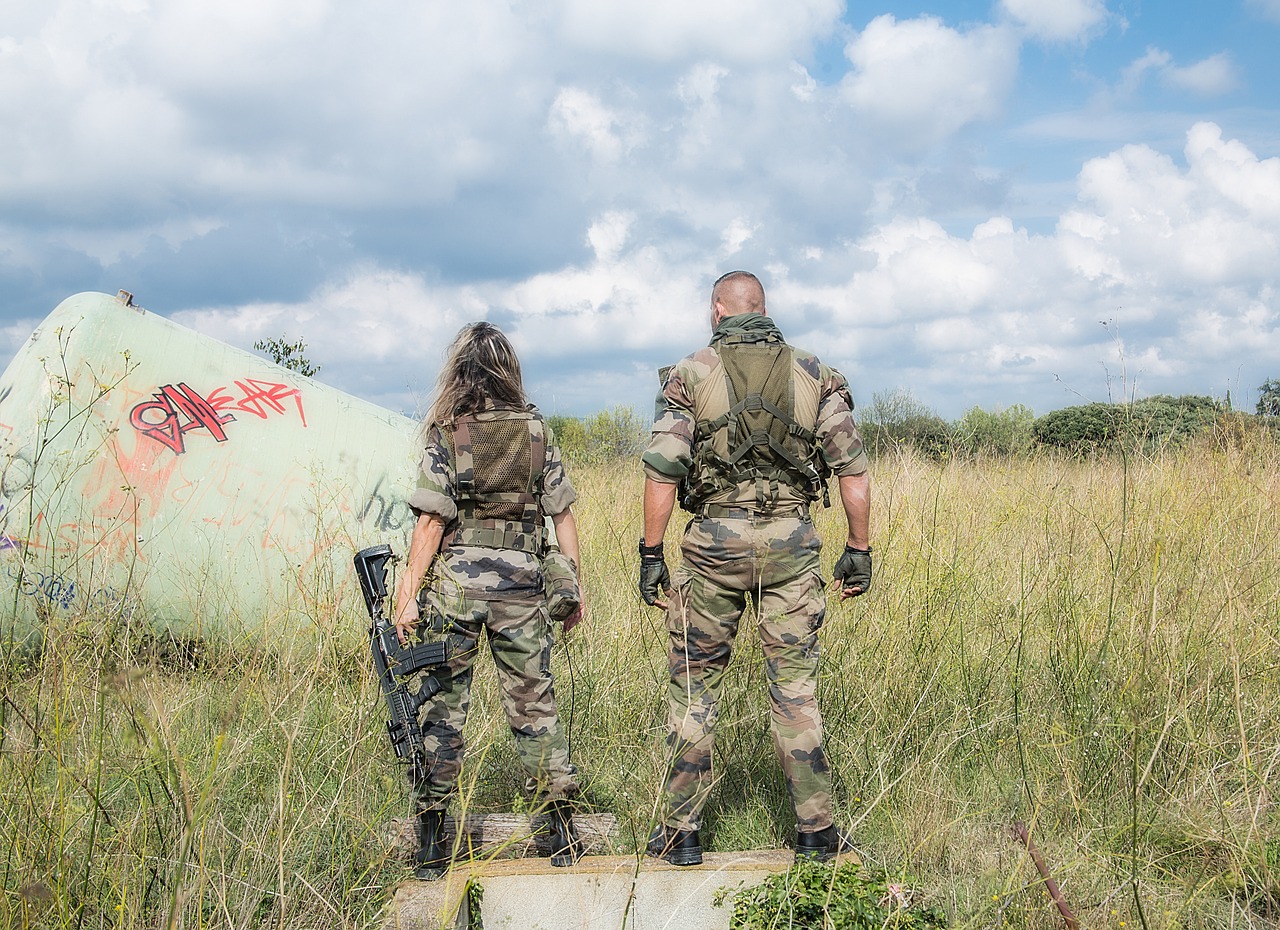
Benefits of Military Robots
The integration of military robots into defense strategies has ushered in a new era of operational capabilities. These machines are not just tools; they are game-changers that enhance safety, efficiency, and effectiveness on the battlefield. Imagine a scenario where soldiers can focus on strategic decisions rather than worrying about their physical safety—this is the reality that military robots are creating.
One of the most significant advantages of deploying military robots is the enhanced safety they provide for personnel. By taking on the most dangerous missions, such as bomb disposal or reconnaissance in hostile territories, robots greatly reduce the risk of human casualties. This means that soldiers can concentrate on their core duties without the constant fear of immediate danger. For instance, during operations in urban environments where threats may be hidden, ground robots equipped with advanced sensors can scout ahead, allowing troops to stay at a safe distance while still gathering critical intelligence.
Moreover, military robots contribute to operational efficiency. Unlike human soldiers, who require rest and can suffer from fatigue, robots can operate continuously, providing persistent surveillance and support. This capability is especially crucial in prolonged engagements where maintaining situational awareness is key. For example, unmanned aerial vehicles (UAVs) can stay airborne for hours, offering real-time data that helps commanders make informed decisions. In fact, the use of these robots allows for a level of operational tempo that was previously unattainable.
Additionally, military robots can perform tasks in hazardous environments where human presence would be too risky. They can navigate through areas contaminated with explosives or chemical agents, ensuring that human soldiers are kept out of harm's way. The ability to deploy robots in such scenarios not only protects lives but also enhances mission success rates. As technology continues to evolve, the types of missions that robots can undertake will expand, further solidifying their role in military operations.
To summarize, the benefits of military robots can be encapsulated in the following key points:
- Risk Reduction: Minimizing human casualties by taking on dangerous missions.
- Operational Efficiency: Continuous operation without fatigue, enhancing overall effectiveness.
- Capability in Hazardous Environments: Performing tasks that would be too dangerous for humans.
As we look to the future, the role of military robots is set to expand even further, making them an indispensable part of modern warfare. The ongoing advancements in technology will likely lead to even more sophisticated systems that can adapt to various combat scenarios, ultimately enhancing the safety and effectiveness of military operations.
Q: How do military robots enhance soldier safety?
A: Military robots take on dangerous missions, such as reconnaissance and bomb disposal, which reduces the risk of human casualties and allows soldiers to focus on strategic decision-making.
Q: What types of tasks can military robots perform?
A: Military robots can perform various tasks, including surveillance, logistics support, bomb disposal, and reconnaissance, significantly improving operational efficiency on the battlefield.
Q: Are there any ethical concerns regarding the use of military robots?
A: Yes, the deployment of military robots raises ethical questions about autonomy, accountability, and the potential for misuse, necessitating careful regulation and oversight.
Q: How do military robots operate continuously without fatigue?
A: Unlike human soldiers, military robots are machines that can function for extended periods without the need for rest, allowing them to provide persistent support and surveillance during military operations.
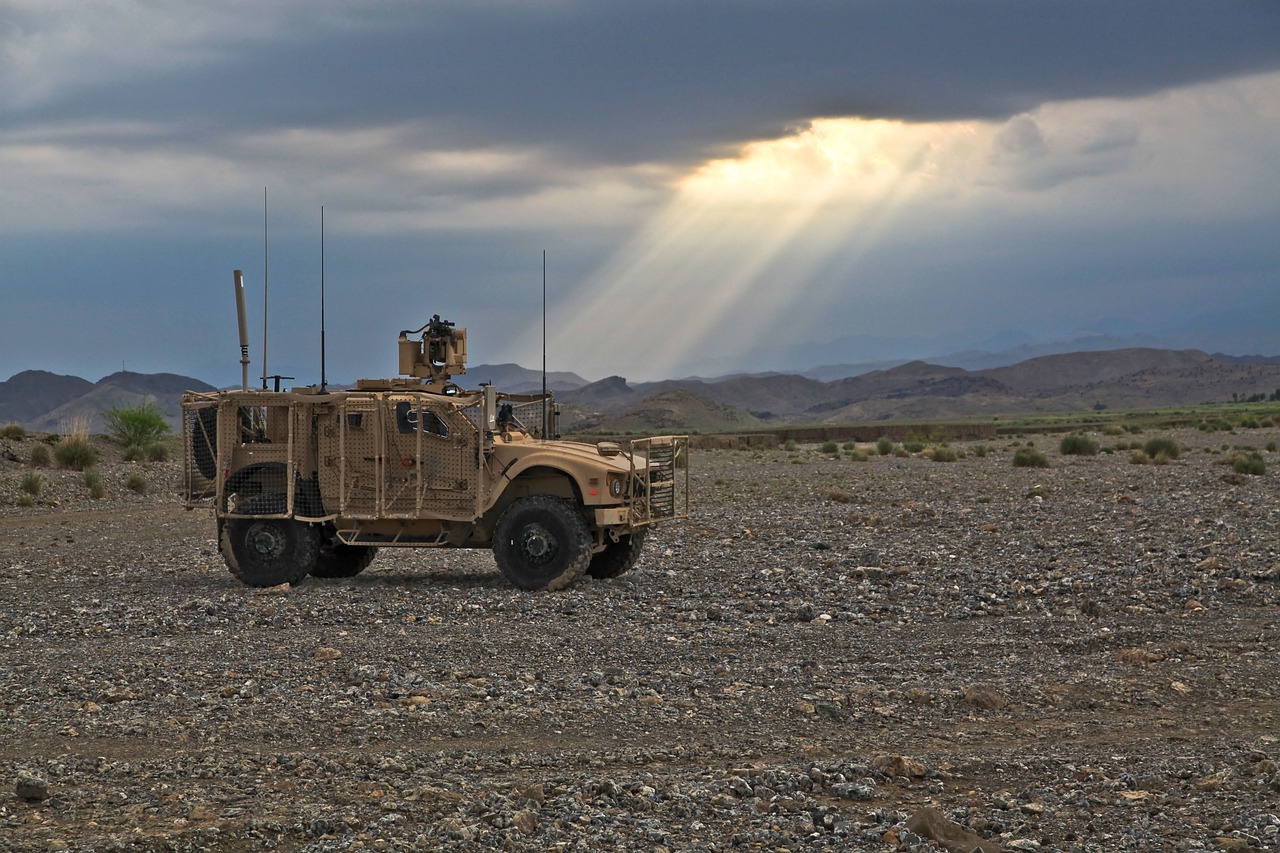
Risk Reduction
The integration of military robots into modern warfare is not just a technological advancement; it represents a profound shift in how armed forces approach risk management on the battlefield. By deploying robots for high-risk missions, military organizations can significantly reduce the exposure of human personnel to life-threatening situations. Imagine a scenario where a bomb needs to be defused in a hostile environment; instead of sending a soldier into the fray, a robot can be dispatched to handle the task. This not only preserves human life but also allows military strategists to allocate their personnel to more critical decision-making roles.
Furthermore, the use of robots minimizes the psychological toll on soldiers. Engaging in combat or hazardous operations can lead to severe mental health issues, such as PTSD. By utilizing robots for dangerous tasks, the armed forces can help alleviate some of this burden. Soldiers can focus on strategy and teamwork, rather than constantly worrying about their safety in life-threatening situations.
Additionally, military robots are equipped with advanced sensors and artificial intelligence, allowing them to assess situations more effectively than humans in many cases. For example, a ground robot can navigate through a minefield, using its sensors to detect explosives without risking a soldier's life. This capability not only enhances safety but also increases mission success rates.
| Advantages of Military Robots in Risk Reduction | Description |
|---|---|
| Minimized Human Casualties | Robots can take on dangerous missions, reducing the risk to human soldiers. |
| Enhanced Decision-Making | Equipped with AI, robots can analyze situations quickly and accurately. |
| Continuous Operation | Robots can work tirelessly, providing support without the need for breaks. |
| Psychological Benefits | Reducing frontline exposure can lessen the mental health burdens on soldiers. |
In conclusion, the deployment of military robots is a game-changer in terms of risk reduction. By taking on perilous tasks, these machines not only safeguard human lives but also enhance the overall effectiveness of military operations. As technology continues to evolve, we can expect even more sophisticated robots that will further mitigate risks and improve safety for our armed forces.
- What types of missions can military robots perform? Military robots can engage in a variety of missions, including reconnaissance, bomb disposal, and logistics support.
- How do military robots reduce risks for soldiers? By taking on dangerous tasks, military robots minimize human exposure to life-threatening situations, allowing soldiers to focus on strategy and decision-making.
- Are military robots equipped with artificial intelligence? Yes, many military robots utilize AI to enhance their decision-making capabilities and adapt to dynamic environments.
- What are the psychological benefits of using military robots? By reducing the need for soldiers to engage directly in high-risk situations, military robots can help alleviate the psychological burdens associated with combat.
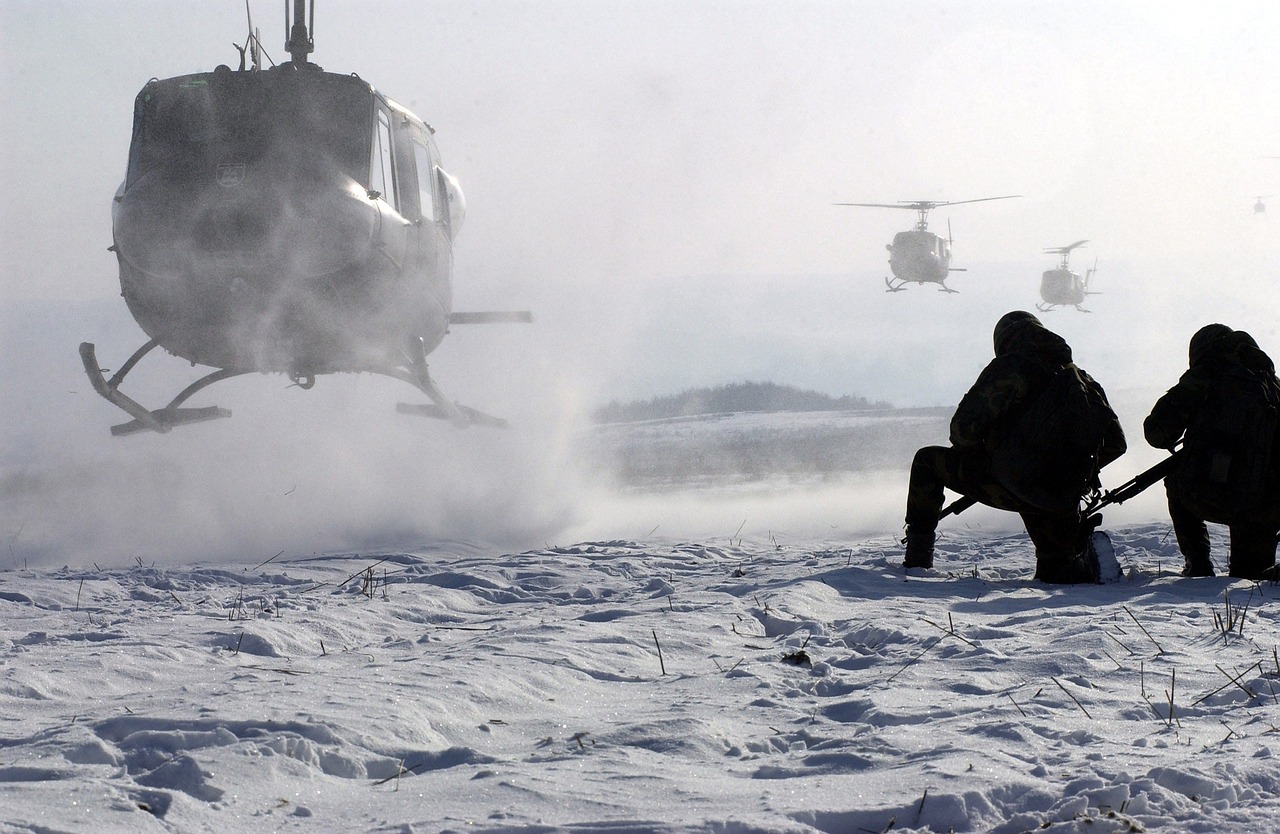
Operational Efficiency
The integration of military robots into defense strategies has brought about a remarkable shift in operational efficiency. Imagine a battlefield where machines tirelessly perform tasks that would otherwise drain human resources. Military robots can operate around the clock, providing constant surveillance and support without the need for rest or breaks. This relentless capability allows military operations to maintain a heightened state of readiness and responsiveness, which is crucial in today's fast-paced combat environments.
One of the most significant advantages of military robots is their ability to execute repetitive tasks with precision and consistency. For instance, in logistics, unmanned ground vehicles (UGVs) can transport supplies and equipment to remote locations without the risk of exposing soldiers to enemy fire. This not only saves lives but also streamlines the supply chain, ensuring that troops have the necessary resources when they need them the most.
Furthermore, military robots are equipped with advanced sensors and technologies that enhance their operational capabilities. These machines can gather data, analyze it in real-time, and relay crucial information back to command centers. This capability significantly reduces the time it takes to make informed decisions on the battlefield. For example, surveillance drones can monitor enemy movements and provide actionable intelligence, allowing commanders to adapt their strategies swiftly. The result is a more agile and responsive military force.
To illustrate the impact of military robots on operational efficiency, consider the following table that compares traditional military operations with those enhanced by robotic technology:
| Aspect | Traditional Operations | Robotic Enhanced Operations |
|---|---|---|
| Personnel Deployment | High risk to human lives | Reduced personnel exposure to danger |
| Operational Hours | Limited by human endurance | 24/7 continuous operation |
| Data Collection | Manual and time-consuming | Automated and real-time |
| Logistics Efficiency | Vulnerable to attacks | Secure and efficient transport |
This table highlights how military robots not only improve the safety of personnel but also enhance overall operational efficiency. With robots handling the heavy lifting, soldiers can focus on critical decision-making and strategic planning, ultimately leading to more successful missions. As we continue to embrace technology in military operations, the potential for increased efficiency seems limitless, paving the way for a future where human and machine work hand in hand.
- What are military robots used for? Military robots are used for various purposes, including surveillance, logistics, reconnaissance, and combat support.
- How do military robots enhance safety? By taking on dangerous missions, military robots reduce the risk to human soldiers, allowing them to focus on strategic tasks.
- What is the future of military robotics? The future of military robotics includes advancements in AI integration and improved collaboration between humans and robots.
- Are there ethical concerns regarding military robots? Yes, there are significant ethical considerations, particularly around autonomous decision-making and accountability in combat scenarios.

Challenges and Ethical Considerations
The deployment of military robots is not without its challenges and ethical dilemmas. As we embrace the future of warfare, it is essential to scrutinize the implications that come with the integration of machines into combat scenarios. One of the most pressing issues is the question of autonomy. When robots are granted the ability to make decisions independently, who is held accountable for their actions? For instance, if a robot mistakenly targets civilians due to a malfunction or misinterpretation of data, the consequences can be catastrophic. This raises significant concerns about responsibility and transparency in military operations.
Moreover, the potential for misuse of these technologies cannot be overlooked. As military robots become more sophisticated, the risk of them falling into the wrong hands increases. Imagine a scenario where an insurgent group gains access to advanced drones capable of executing strikes autonomously. The implications of such a situation could be dire, leading to a new era of warfare where the lines between combatants and non-combatants blur even further.
Additionally, the ethical considerations surrounding the use of military robots extend to the psychological impact on soldiers. Relying on machines for combat roles may desensitize personnel to the realities of war. How do we ensure that the human element of warfare is preserved? This is a vital question that military leaders must address as they integrate robots into their strategies. Furthermore, the use of robots in warfare could lead to a detachment from the moral implications of taking lives, as decisions are made by algorithms rather than human judgment.
In light of these challenges, establishing regulations and oversight mechanisms is crucial. Governments and military organizations must collaborate to create frameworks that govern the deployment and use of military robots. This includes compliance with international laws and ethical standards, ensuring that the use of these technologies does not violate human rights or escalate conflicts unnecessarily. A comprehensive approach to regulation can help mitigate some of the risks associated with autonomous military systems.
To summarize, the challenges and ethical considerations surrounding military robots are multifaceted and require careful deliberation. As we advance towards a future where machines play a significant role in warfare, it is imperative to maintain a balance between technological innovation and ethical responsibility. The dialogue surrounding these issues must continue, engaging not only military leaders but also ethicists, lawmakers, and the public to navigate the complexities of this evolving landscape.
- What are the main ethical concerns regarding military robots? The primary concerns include accountability for autonomous decisions, potential misuse of technology, and the psychological impact on soldiers.
- How can regulations help in the deployment of military robots? Regulations can ensure compliance with international laws and ethical standards, helping to mitigate risks associated with the use of military robots.
- What is the role of AI in military robotics? AI enhances the decision-making capabilities of military robots, allowing them to adapt to dynamic combat environments more effectively.
- Will military robots replace human soldiers? While robots will play an increasingly significant role, they are expected to work alongside human soldiers, enhancing their capabilities rather than completely replacing them.
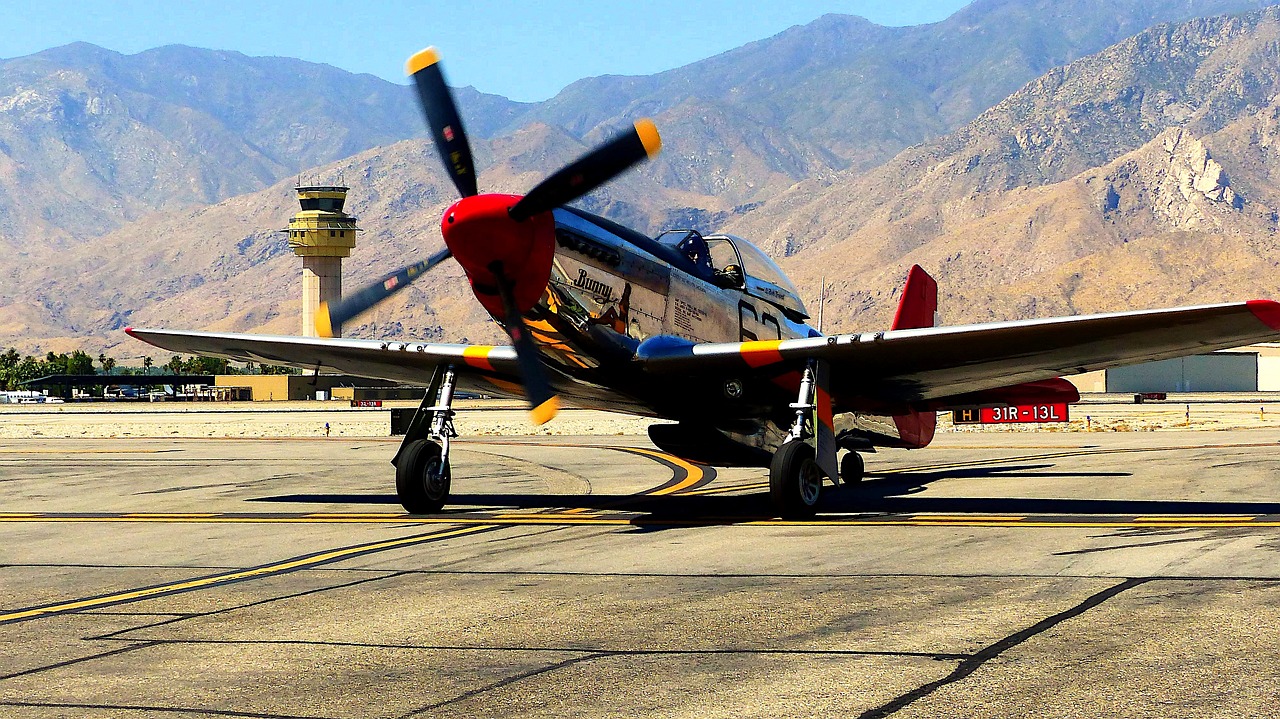
Autonomous Decision-Making
The rise of military robots has introduced a fascinating yet concerning aspect of warfare: . Imagine a battlefield where machines, equipped with advanced algorithms and artificial intelligence, make real-time decisions without human intervention. This capability can significantly enhance operational efficiency, but it also raises profound ethical questions. How do we ensure accountability when a robot decides to engage a target? Who is responsible for its actions—the manufacturer, the military, or the machine itself?
Autonomous military robots can analyze vast amounts of data and respond to threats faster than human soldiers. They can assess situations, prioritize targets, and execute commands with precision. However, this autonomy comes with risks. For instance, in the heat of battle, a robot might misinterpret a situation due to flawed algorithms or insufficient data, leading to unintended consequences. The potential for collateral damage is a serious concern, especially when lives are at stake.
Moreover, the ethical implications of allowing machines to make life-and-death decisions cannot be overstated. As we venture further into the realm of autonomous warfare, it is crucial to establish guidelines that govern the use of these technologies. Here are some key considerations:
- Accountability: Who is held accountable for the actions of an autonomous robot?
- Transparency: How can we ensure that the decision-making processes of these machines are transparent and understandable?
- Compliance: Are these robots programmed to adhere to international laws of warfare?
As military organizations around the world explore the deployment of autonomous systems, they must grapple with these questions. Developing robust regulations and ethical frameworks is essential to prevent misuse and ensure that technology serves humanity rather than undermines it. The future of warfare may hinge on our ability to strike a balance between innovation and moral responsibility.
- What are autonomous military robots?
Autonomous military robots are machines capable of performing tasks and making decisions without human intervention, often using artificial intelligence to analyze data and respond to situations on the battlefield. - How do autonomous robots enhance military operations?
They can operate continuously without fatigue, analyze vast amounts of data quickly, and respond to threats in real-time, which improves operational efficiency and effectiveness. - What ethical concerns are associated with autonomous decision-making in warfare?
Key concerns include accountability for actions taken by robots, the potential for unintended consequences, and the need for compliance with international laws. - Can autonomous robots be trusted in combat?
While they can enhance efficiency, trust in autonomous robots depends on the robustness of their programming and the ethical frameworks governing their use.
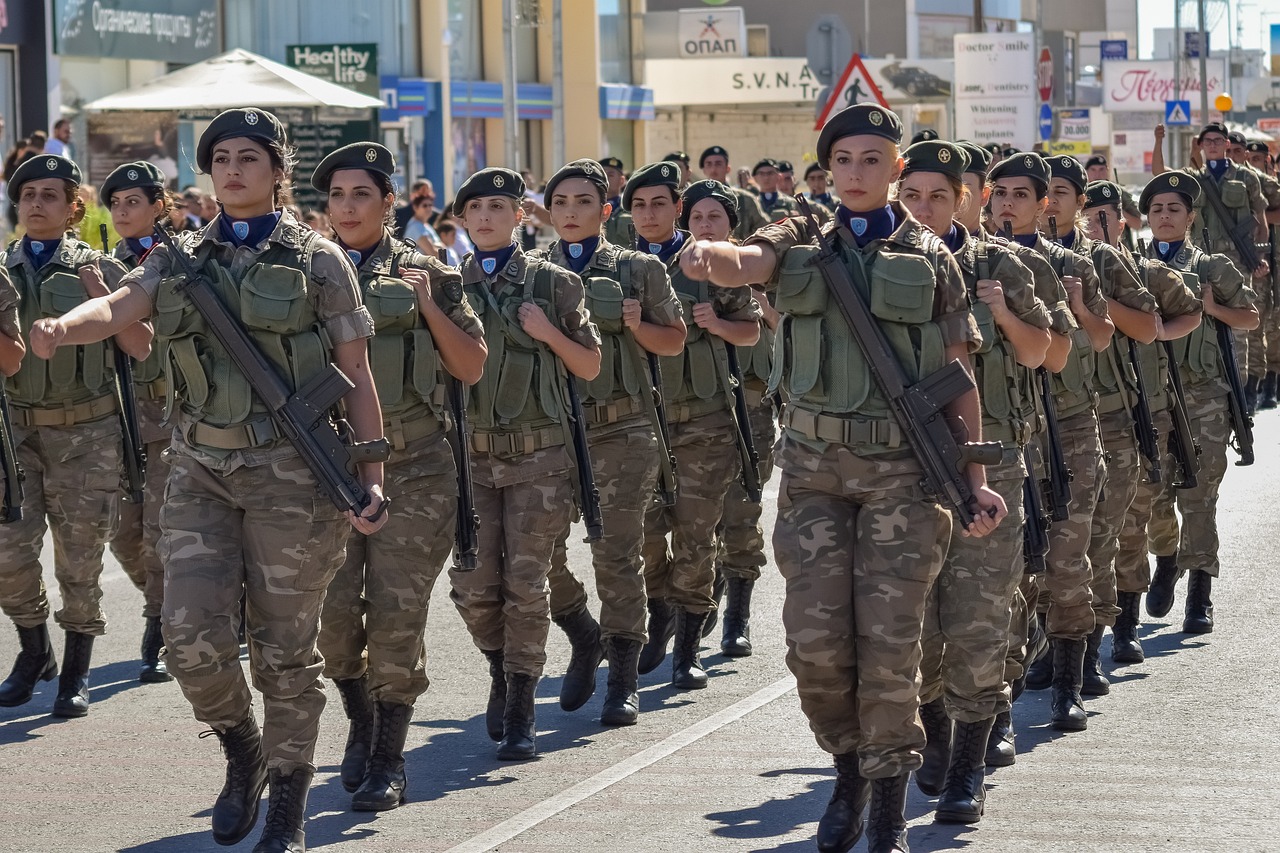
Regulation and Oversight
This article explores the evolution, applications, and implications of military robots, highlighting their role in modern warfare and the future of defense strategies.
The development of military robots has transformed over the decades, from basic remote-controlled devices to sophisticated autonomous systems, enhancing operational capabilities and reducing human risk on the battlefield.
Military robots come in various forms, including drones, ground vehicles, and underwater robots. Each type serves specific purposes, ranging from surveillance to logistics and combat support.
UAVs, commonly known as drones, have revolutionized aerial reconnaissance and strike capabilities, providing real-time intelligence while minimizing pilot exposure to danger.
Combat drones are equipped with advanced weaponry, enabling them to engage enemy targets with precision, thereby reducing collateral damage and increasing mission effectiveness.
Surveillance drones are primarily used for intelligence gathering, offering high-resolution imagery and real-time data to enhance situational awareness for military operations.
Ground robots, including unmanned ground vehicles (UGVs), are deployed for reconnaissance, bomb disposal, and supply transport, significantly improving operational efficiency on the battlefield.
The integration of robots in military operations offers numerous advantages, such as enhanced safety for personnel, increased operational efficiency, and the ability to perform tasks in hazardous environments.
By utilizing robots for dangerous missions, military forces can minimize human casualties, allowing soldiers to focus on strategic decision-making rather than frontline dangers.
Military robots can operate continuously without fatigue, providing persistent surveillance and support, which enhances the overall effectiveness of military campaigns.
The deployment of military robots raises significant ethical questions regarding autonomy, accountability, and the potential for misuse, necessitating a careful examination of their implications in warfare.
The ability of robots to make autonomous decisions in combat scenarios raises concerns about accountability and the potential for unintended consequences during military operations.
As military robots become increasingly autonomous and integral to defense strategies, have emerged as critical components in their deployment. The need for a robust framework is essential to ensure that these technologies are used responsibly and ethically. This framework should encompass various aspects, including:
- International Laws: Compliance with existing international humanitarian laws is paramount. Regulations must ensure that military robots do not violate the rights of combatants or civilians.
- Accountability: Clear lines of accountability must be established for actions taken by autonomous systems. This includes determining who is responsible when a robot makes a decision that leads to unintended harm.
- Transparency: The decision-making processes of military robots should be transparent to foster trust and understanding among the public and military personnel.
Moreover, the establishment of oversight bodies can help monitor the use of military robots in real-time, ensuring compliance with ethical standards and international laws. These bodies should be empowered to investigate incidents involving military robots, providing recommendations for future operations.
In addition, it is crucial to involve a diverse range of stakeholders, including ethicists, technologists, and military personnel, in the development of these regulations. Such collaboration can help create a balanced approach that addresses the complexities of military robotics while ensuring that ethical considerations are prioritized.
As technology continues to advance, the future of military robotics promises even greater capabilities, including enhanced AI integration and improved human-robot collaboration on the battlefield.
The incorporation of artificial intelligence in military robots is expected to enhance their decision-making capabilities, enabling them to adapt to dynamic combat environments more effectively.
Future military operations will likely see increased collaboration between soldiers and robots, combining human intuition with machine efficiency to achieve mission success.
- What are military robots used for? Military robots are used for a variety of tasks, including surveillance, reconnaissance, logistics, and combat support.
- How do military robots enhance safety? By taking on dangerous missions, military robots reduce the risk to human soldiers, allowing them to focus on strategic operations.
- What ethical concerns are associated with military robots? Ethical concerns include issues of accountability, the potential for misuse, and the implications of autonomous decision-making in combat situations.
- How can military robots be regulated? Regulation can be achieved through compliance with international laws, establishing accountability measures, and creating oversight bodies to monitor their use.

The Future of Military Robotics
The realm of military robotics is on the brink of a significant transformation, driven by rapid technological advancements and an ever-evolving battlefield landscape. As we look towards the future, the integration of artificial intelligence (AI) and enhanced human-robot collaboration will redefine how military operations are conducted. Imagine a battlefield where machines and humans work side by side, each complementing the other's strengths. This synergy could lead to unprecedented levels of efficiency and effectiveness in military strategies.
One of the most exciting prospects is the integration of AI into military robots. This isn't just about making robots smarter; it's about equipping them with the ability to learn from their environments and adapt to changing conditions. For instance, AI-driven drones could analyze enemy movements in real-time, adjusting their tactics on the fly to ensure mission success. This capability could drastically reduce the time needed for reconnaissance missions, allowing military forces to respond more swiftly to threats.
Moreover, the future of military robotics will likely see a shift towards increased human-robot collaboration. Picture a scenario where soldiers are equipped with augmented reality (AR) glasses that provide real-time data from drones and ground robots. This would allow them to make informed decisions quickly, utilizing the strengths of both human intuition and machine precision. Such collaboration could lead to a more cohesive and responsive military force, capable of tackling complex challenges on the battlefield.
However, this future is not without its challenges. As military robots become more autonomous, questions regarding accountability and ethical use will become increasingly critical. Who is responsible if a robot makes a mistake? Establishing clear guidelines and regulations will be essential to ensure that these powerful tools are used responsibly and ethically. The military must navigate these waters carefully, balancing the benefits of advanced technology with the potential risks it poses.
In conclusion, the future of military robotics holds immense potential, with advancements in AI and human-robot collaboration poised to revolutionize warfare. As we embrace these technologies, it is crucial to address the ethical implications and establish frameworks that guide their use. This way, we can harness the power of robotics to enhance national security while ensuring that we remain accountable for our actions on the battlefield.
- What role will AI play in military robotics? AI will enhance the decision-making capabilities of military robots, enabling them to adapt to dynamic combat environments and improve operational efficiency.
- How will human-robot collaboration change military operations? Increased collaboration will allow soldiers to leverage both human intuition and machine efficiency, resulting in more effective mission outcomes.
- What are the ethical concerns surrounding military robots? Ethical concerns include accountability for autonomous decisions, potential misuse of technology, and the need for regulations to ensure compliance with international laws.
- Will military robots replace human soldiers? While robots will enhance military capabilities, they are expected to complement human soldiers rather than replace them entirely.
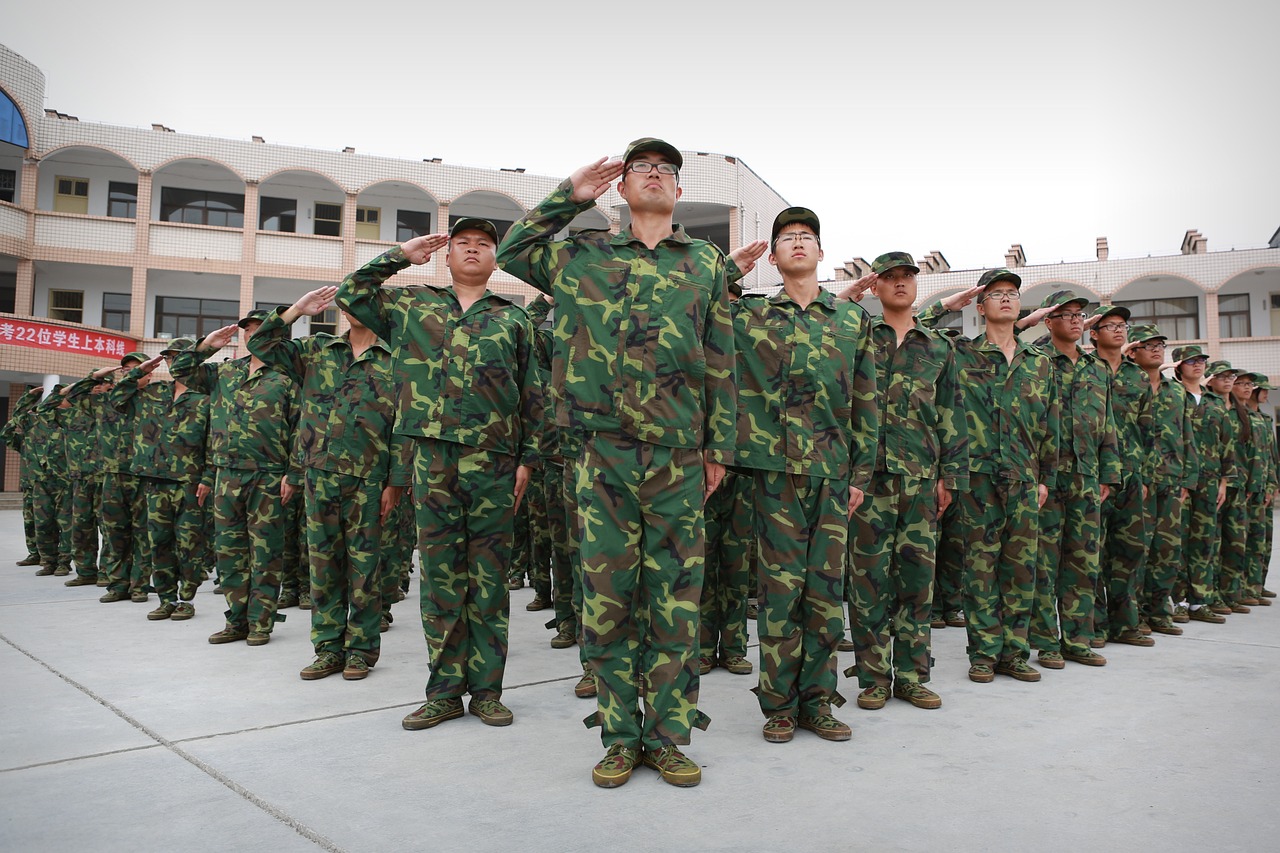
AI Integration
As we look towards the horizon of military technology, one of the most exciting frontiers is the integration of artificial intelligence (AI) into military robotics. Imagine a battlefield where machines not only follow commands but can also analyze situations, make decisions, and adapt to changing environments in real-time. This is not science fiction; it's the future of warfare. AI integration is set to revolutionize how military operations are conducted, enhancing both efficiency and effectiveness.
At its core, AI empowers military robots to process vast amounts of data from various sources, such as satellite imagery, drone feeds, and ground sensors. With advanced algorithms, these robots can identify patterns, predict enemy movements, and even assess threats without human intervention. This level of processing allows for quicker responses in critical situations, which can be the difference between success and failure in military operations.
Consider the implications of AI-driven decision-making on the battlefield. For instance, a drone equipped with AI can autonomously navigate through hostile territory, identifying targets with precision while minimizing the risk to human pilots. This capability not only enhances the effectiveness of missions but also significantly reduces the potential for human error. However, it also raises questions about accountability: if an AI makes a mistake, who is responsible?
Moreover, the integration of AI into military robots facilitates collaborative operations between humans and machines. With AI acting as a co-pilot or assistant, soldiers can focus on strategic planning and execution, leveraging the strengths of both human intuition and machine efficiency. For example, during a reconnaissance mission, AI can analyze terrain and suggest the safest routes, allowing soldiers to concentrate on their objectives rather than navigating potential dangers.
To illustrate the potential benefits of AI integration in military robotics, consider the following table that outlines some key advantages:
| Advantage | Description |
|---|---|
| Enhanced Decision-Making | AI can process data and make informed decisions faster than humans, improving operational effectiveness. |
| Reduced Human Risk | By employing robots in dangerous situations, the risk to human life is significantly decreased. |
| Real-Time Adaptability | AI systems can adapt to changing circumstances on the battlefield, providing a tactical advantage. |
| Data Analysis | AI can analyze vast amounts of data to identify trends and predict enemy actions, enhancing situational awareness. |
As we delve deeper into the realm of AI in military robotics, it's crucial to address the ethical considerations that accompany this technology. Questions about autonomy, accountability, and the potential for misuse are paramount. The military must establish guidelines and frameworks to ensure that AI is used responsibly and in accordance with international laws. Balancing innovation with ethical responsibility will be key to harnessing the full potential of AI in military applications.
- What is AI integration in military robots? - AI integration refers to the incorporation of artificial intelligence technologies into military robots, enabling them to process information, make decisions, and adapt to dynamic environments autonomously.
- How does AI improve military operations? - AI enhances military operations by providing faster decision-making, reducing risks to human personnel, and improving the accuracy of mission execution through real-time data analysis.
- What are the ethical concerns surrounding AI in warfare? - Ethical concerns include issues of accountability for autonomous decisions, the potential for misuse of AI technology, and the need for regulations to ensure compliance with international laws.
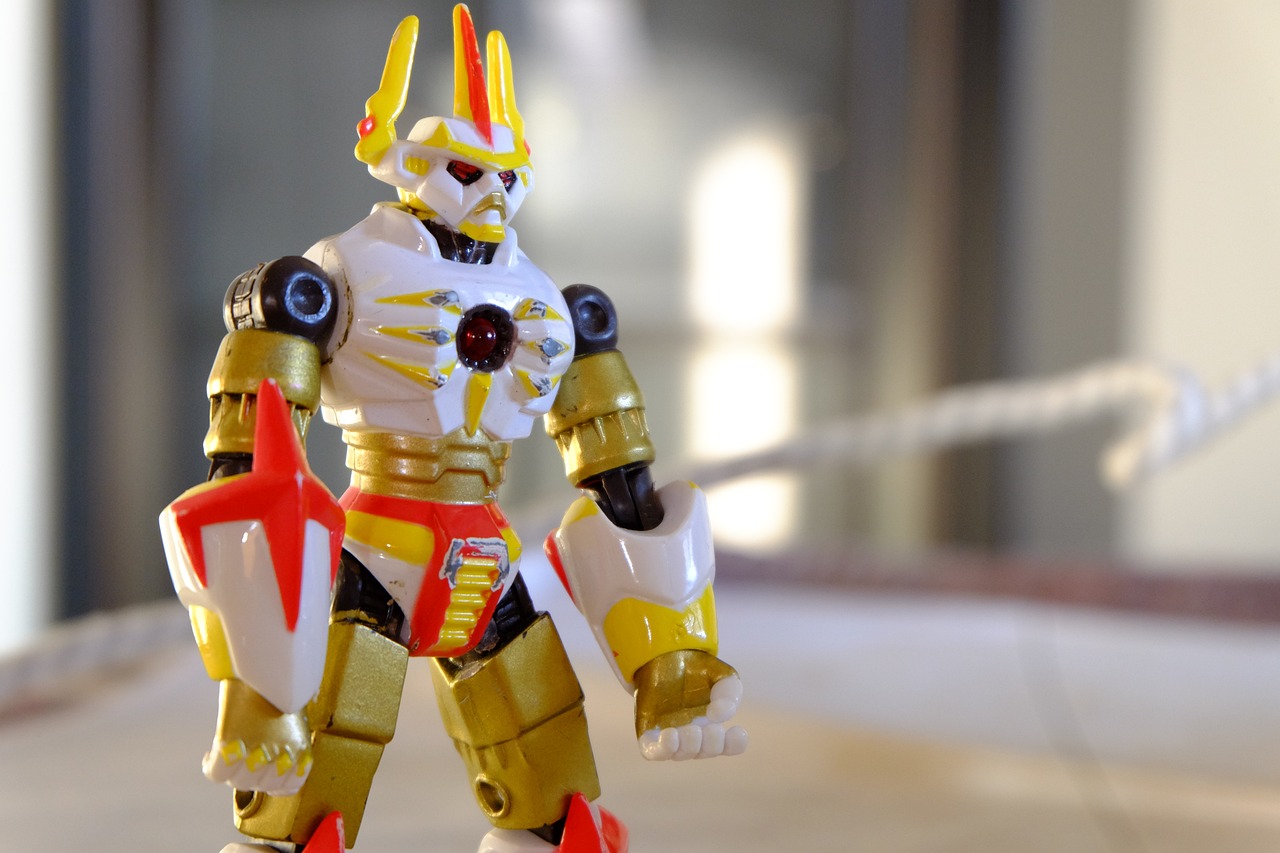
Human-Robot Collaboration
As we step into a new era of military operations, the synergy between humans and robots is becoming increasingly critical. Imagine a battlefield where soldiers and machines work hand in hand, each complementing the other's strengths and weaknesses. This collaboration is not just a futuristic dream; it's rapidly becoming a reality. allows military personnel to leverage the precision and endurance of robots while applying human intuition and strategic thinking to complex situations.
One of the most significant advantages of this collaboration is the enhancement of situational awareness. Robots equipped with advanced sensors can gather vast amounts of data in real-time, providing soldiers with crucial information that would be difficult to obtain otherwise. For instance, drones can scout enemy positions while ground robots can assess hazardous environments, relaying vital intelligence back to the command center. This exchange of information enables military leaders to make informed decisions quickly, potentially turning the tide of battle.
Moreover, the integration of robots into military operations helps alleviate the burden on soldiers. Instead of putting themselves in harm's way for tasks such as reconnaissance or explosive ordnance disposal, troops can deploy robots designed specifically for these purposes. This not only reduces risk but also allows soldiers to focus on higher-level strategic objectives. Think of it as having a trusted partner who can handle the dangerous work, enabling you to concentrate on winning the war rather than just surviving the battlefield.
However, successful human-robot collaboration hinges on effective communication between humans and machines. As robots become more autonomous, the need for intuitive interfaces that allow soldiers to easily interact with these systems becomes paramount. Training programs must evolve to ensure that military personnel are proficient in using these technologies, understanding both their capabilities and limitations. In essence, soldiers must learn to trust their robotic counterparts, recognizing that these machines are not just tools but essential team members.
In the future, we can expect even more sophisticated forms of collaboration. With advancements in artificial intelligence, robots will not only assist but also learn from their human counterparts. This means they can adapt to various combat scenarios and provide suggestions based on real-time data analysis. Imagine a scenario where a soldier receives real-time feedback from an AI-driven robot, helping them to make split-second decisions that could save lives. The potential is vast, and as technology evolves, so too will the nature of military operations.
In conclusion, the future of military operations lies in the effective collaboration between humans and robots. As we embrace this partnership, we must also consider the ethical implications and ensure that regulations are in place to guide their use. By fostering a strong relationship between soldiers and their robotic allies, we can enhance operational effectiveness while keeping our troops safe. The battlefield of tomorrow will not just be about machines; it will be about the powerful alliance between human ingenuity and robotic precision.
- What are the primary benefits of human-robot collaboration in the military? The main benefits include enhanced situational awareness, reduced risk for soldiers, and improved operational efficiency.
- How do robots improve decision-making on the battlefield? Robots gather and analyze real-time data, providing valuable insights that help military leaders make informed decisions quickly.
- What challenges exist in human-robot collaboration? Key challenges include effective communication, trust-building between soldiers and robots, and the need for comprehensive training programs.
- Will robots completely replace soldiers in the future? While robots will play an increasingly significant role, they are expected to complement human soldiers rather than replace them entirely.
Frequently Asked Questions
- What are military robots?
Military robots are unmanned machines designed for various tasks in defense operations, including surveillance, reconnaissance, and combat support. They range from drones to ground vehicles, each serving a unique purpose on the battlefield.
- How have military robots evolved over time?
The evolution of military robots has been remarkable, transitioning from simple remote-controlled devices to advanced autonomous systems. This transformation has significantly enhanced operational capabilities and reduced risks for human personnel in combat situations.
- What types of military robots are commonly used?
There are several types of military robots, including:
- Unmanned Aerial Vehicles (UAVs) - Used for reconnaissance and strikes.
- Unmanned Ground Vehicles (UGVs) - Deployed for tasks like bomb disposal and supply transport.
- Underwater Robots - Utilized for naval operations and underwater reconnaissance.
- What are the benefits of using military robots?
Military robots provide numerous advantages, such as:
- Enhanced safety for personnel by minimizing human involvement in dangerous missions.
- Increased operational efficiency, as robots can work continuously without fatigue.
- Improved capabilities in hazardous environments, allowing for more effective mission execution.
- What ethical concerns are associated with military robots?
The deployment of military robots raises significant ethical questions, particularly regarding:
- Autonomous decision-making and accountability in combat situations.
- The potential for misuse and the need for regulation and oversight to ensure compliance with international laws.
- How is AI integrated into military robotics?
Artificial intelligence is increasingly being incorporated into military robots, enhancing their decision-making abilities. This integration allows robots to adapt to dynamic combat environments, improving their effectiveness in various scenarios.
- What does the future hold for military robotics?
The future of military robotics looks promising, with advancements in technology leading to greater capabilities. We can expect enhanced human-robot collaboration, where soldiers and robots work together seamlessly to achieve mission success.






